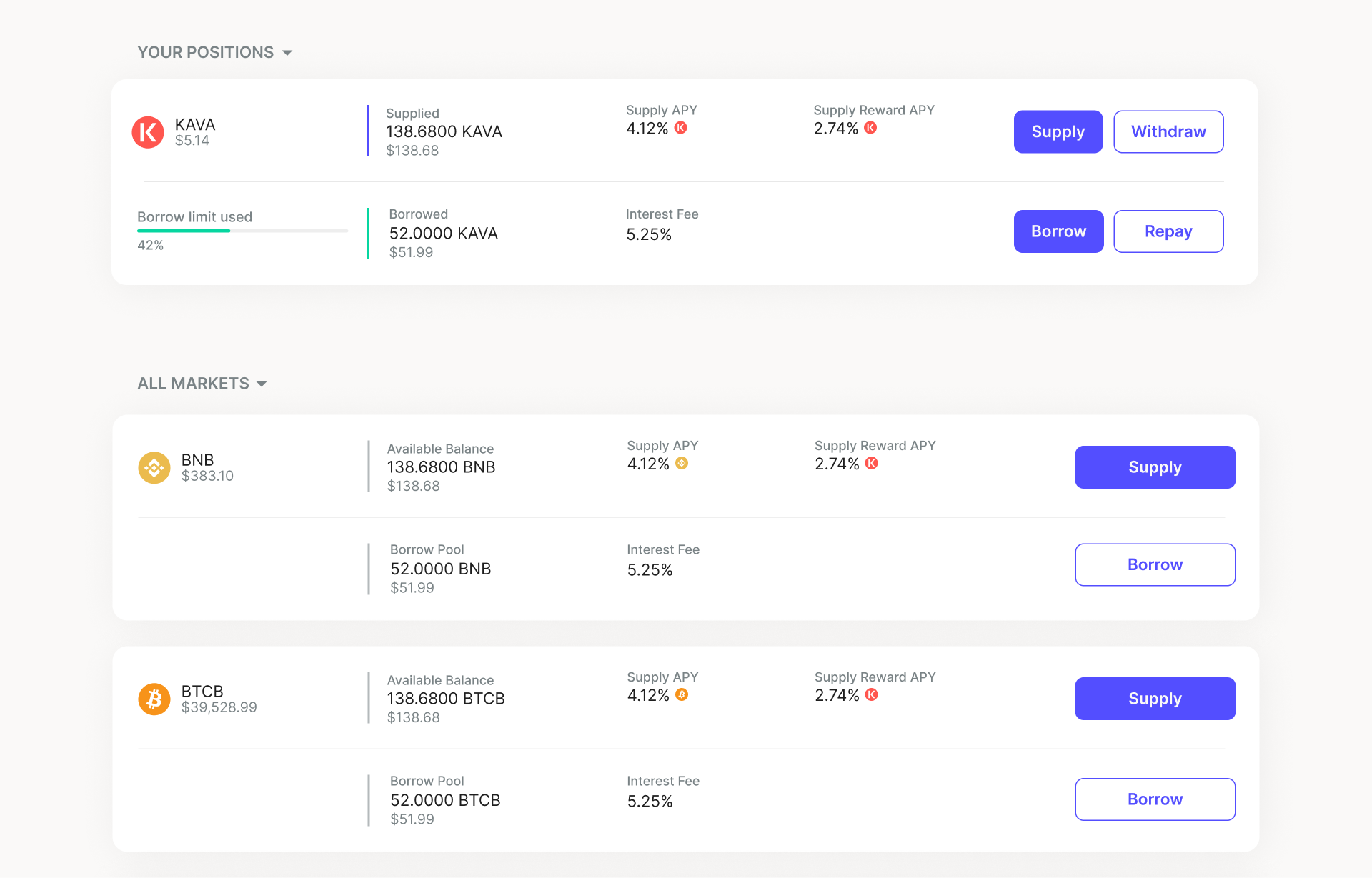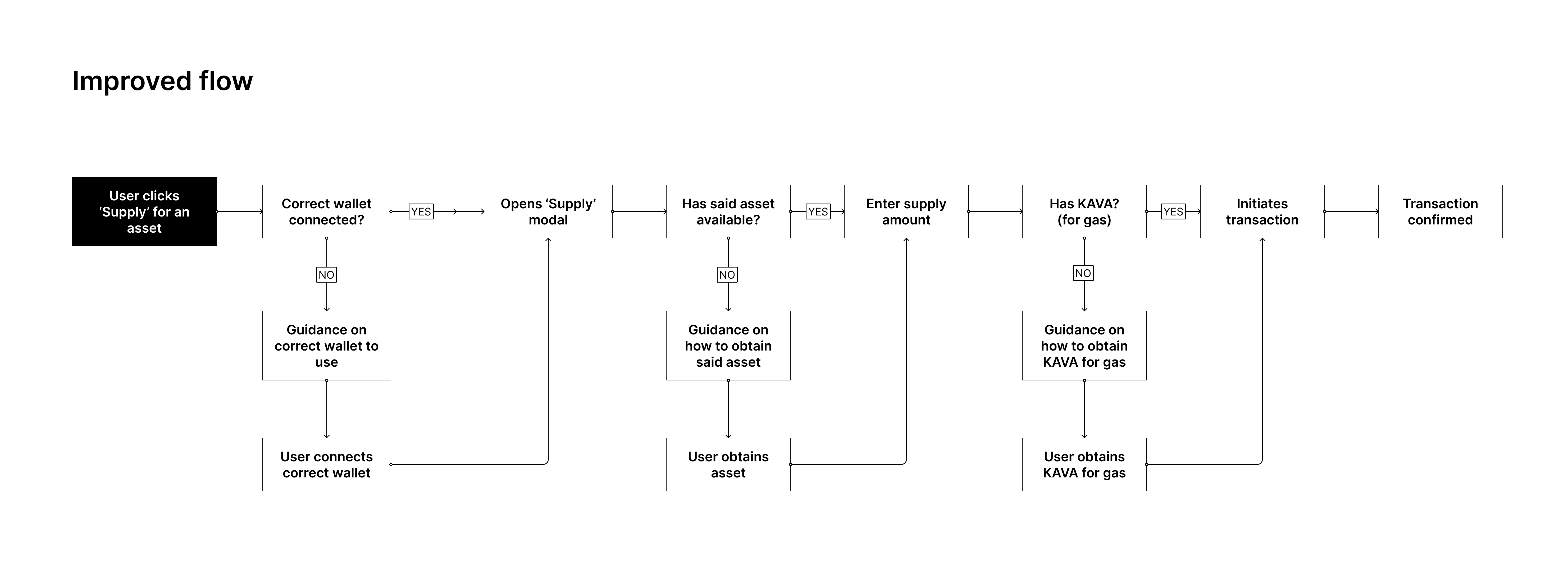The first step of the process was to identify what the actual inconsistencies across the apps were. Here are the main ones that were identified:
Too many functions for a single button:
- A single button would have multiple actions
- A single button having different states depending on where you are within the workflow. For example, on Kava Mint, if you didn’t have a particular asset, it prompts you to 'Deposit' said asset, but if you do have that asset, it says to 'Supply / Borrow'.
Lack of hierarchy within buttons: there was no distinction between a primary action and a secondary action.
- On Mint, the CTAs switch between ‘Deposit’, ‘Send / Receive’ and ‘Supply / Borrow’.
- Lend shows ‘Supply / Withdraw’ and ‘Borrow / Repay’.
- Swap shows ‘Add’, ‘Swap’ and ‘Remove’.
Existing UI for Mint, Lend and Swap
Since the first goal of this project is to establish consistency, we determined some rules the app needed to follow:
1 button = 1 action
Each button will have a single state. It shouldn’t change depending on where a user is in the process. Having multiple states for a single button could increase user confusion, especially if they are unfamiliar with crypto terminology.
Establishing hierarchy with Primary and Secondary buttons.
Since our overarching goal is to get users to put their assets into our app, we determined that supplying and borrowing are the main actions that we want our users to accomplish, as it fulfills the company’s overarching goal of increasing it’s Total Value Locked (the total value of the amount of assets supplied / staked on a decentralized platform).
 Improved buttons
Improved buttons
After clarifying the primary and secondary CTAs on the page, we moved on to improving the user’s workflow.
In the past workflow, guidance was very minimal. If a user didn’t have what was necessary, there was no further indication or information on what actions to take to obtain what they needed. As shown in the diagram above, if users didn’t meet the criteria at a specific step, the workflow just ended there, without any guidance on how to move forward.
We improved the past workflow by providing more guidance and context at points of the flow where there could be potential drop-off. For example, if a user wasn’t connected to the correct wallet, we showed them a which wallets to connect to instead of simply blocking users from moving forward. Our goal is to always guide users back to the happy path, rather than completely stopping their flow.




